Powderpost Beetles
ENTFACT-616: Powderpost Beetles | Download PDF
by Michael F. Potter, Extension Entomologist
University of Kentucky College of Agriculture
Powderpost beetles are second only to termites in their ability to damage dry, seasoned wood. And yet, customers often receive conflicting opinions about whether the insects and/or damage they are seeing is indeed due to powderpost beetles. Mistakes also are made in determining whether the infestation is active, and if so, how it should be managed. As a result, the pests may cause considerable confusion for homeowners, wood suppliers, manufacturers, builders, and even pest control companies. This publication explains how to make those determinations.
Types and Habits
“Powderpost beetle” is a term used to describe several species of small (1/8-3/4 inch long) insects that reduce wood to a flour-like powder (Figure 1). The developing grub-like larvae inflict damage as they create narrow, meandering tunnels in wood as they feed. Tunneling and larval development take place entirely below the wood surface. Infestations typically are discovered after noticing powder, accompanied by small, round “shot holes” in the wood surface. These are exit holes where adult beetles have chewed out of the wood after completing their development. Newly emerged adults mate and lay eggs on or below the surface of bare, unfinished wood. The eggs hatch into tiny larvae that bore into the wood, emerging as adults one to five years later, usually during late winter, spring or summer depending upon species. Customers are more likely to see damage, rather than the beetles themselves, because the adults are cryptic and active mainly at night. Occasionally, the beetles may be found near damaged wood, or on windowsills since some are attracted to light.
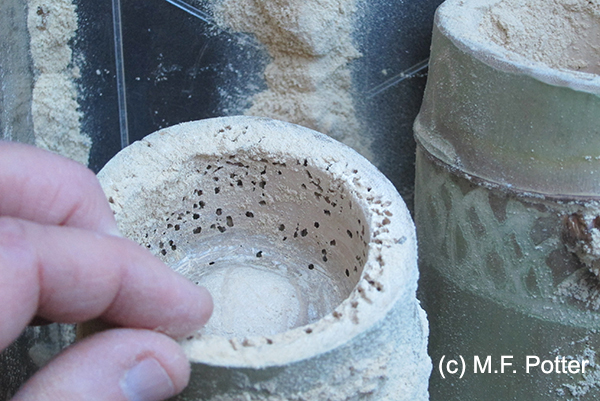

Fig. 1: Powderpost beetles produce small round holes accompanied by wood powder.
The three most destructive groups of powderpost beetles are the lyctids, anobiids, and bostrichids. Each group contains several species capable of damaging wood materials.
Lyctid powderpost beetles are small (1/16-1/4 inch), narrow and elongated, reddish-brown to black beetles (Figure 2). Their emergence holes are round and about the size of a pinhead. The powdery dust feels like flour or fine talc, and often accumulates in small piles beneath or beside emergence holes. Lyctid powderpost beetles attack only wood products manufactured from hardwood (broadleaf) trees such as oak, ash, walnut, hickory, poplar or cherry. Consequently, infestations are often associated with flooring, paneling, molding, window and doorframes, and furniture. Lyctids do not normally infest structural building components (studs, joists, beams, etc.) since these usually consist of non-vulnerable softwoods (conifers/evergreens). Tropical hardwoods are especially prone to lyctid infestation because of poor storage and drying practices before importation. Articles made from bamboo are commonly infested as well. Plywood fabricated from hardwood veneers may be attacked, but damage is usually confined to the hardwood layer in which eggs were initially laid since the larvae tend to avoid glues and resins. Construction plywood (used for subfloors, sheathing, etc.), is made from softwood and is unsuitable for infestation by lyctids.
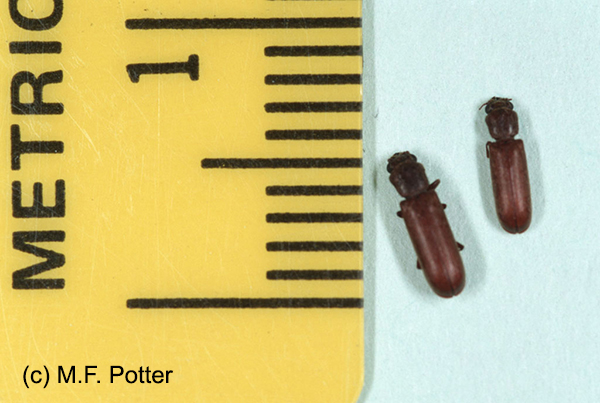
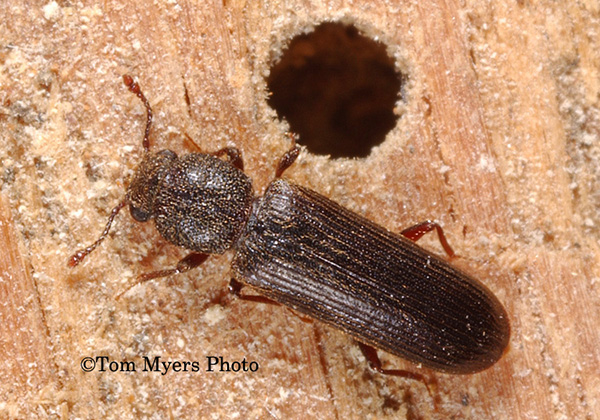
Fig. 2 Lyctid powderpost beetles. The powder is the consistency of flour.
After emergence and mating, female beetles locate susceptible wood to lay eggs. Ten to 50 eggs per female are inserted into the tiny pores and vessels of unfinished wood. Surfaces that are stained, varnished, waxed or painted are immune from attack (although larvae already within infested wood may emerge through finished surfaces). Also avoided are softwoods such as pine. Before depositing eggs, female lyctid beetles “test” the suitability of wood for the larvae, which require starches and sugars for development. If the starch content of wood is insufficient (less than about 3 percent), the females will not use it for egg laying.
Lower starch levels also make it harder for the larvae to complete their development. In newly seasoned wood with abundant nutrients, egg to adult development occurs in less than a year. Conversely, as wood ages, starch content declines and development slows to the point where some beetles may not emerge for two or more years if at all. Consequently, infestations eventually cease and die off even without intervention — an important factor when weighing treatment options (see ‘Managing Infestations’). Small numbers of beetles developing within wood may continue to emerge for up to about five years. This is due to diminished suitability of the wood rather than from new infestation. Homeowners should be aware of this possibility.
Lyctids have less stringent moisture requirements than other types of powderpost beetles. Infestations can persist in wood with a moisture content as low as about eight percent, a common occurrence in indoor, temperature-controlled environments. However, in drier wood (less than 10% moisture) maturation of larvae is prolonged, due to declining starch content.
As noted earlier, lyctid beetles typically start emerging from wood within a year of processing. Thus, infestations usually are encountered in new homes or newly manufactured articles. In almost all cases, infestation results from wood that contained eggs or larvae at the time it was brought into the dwelling. This is significant because responsibility for treatment or replacement often resides with the supplier, manufacturer, or installer, rather than the homeowner. The infested article probably was constructed from wood that was improperly dried or stored. Although lyctids sometimes infest firewood, this is seldom the reason other materials become infested within a home.
Bostrichid powderpost beetles vary in size depending on the species. Most associated with wood products are reddish-brown to black beetles ranging in length from 1/8-1/4 inch. Compared to lyctids, bostrichids are less narrow-bodied and flattened, and the head is oriented downward, appearing somewhat “hooded” (Figure 3). Many species also have tiny, roughened, rasp-like protrusions behind the head, and some have a pair of projecting spines at the end of the body. Bostrichids create circular 1/8-1/4 inch holes in wood like other powderpost beetles. Female beetles have the unusual habit of boring directly into wood in order to lay eggs. These holes are devoid of powder. Conversely, holes formed by beetles upon completing their development are packed with powder. Wood powder produced by bostrichids is more meal-like than lyctid powder and tends to remain tightly packed in the holes and feeding galleries of the larvae.
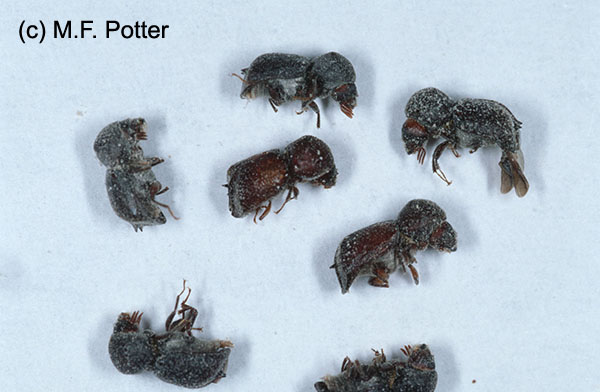
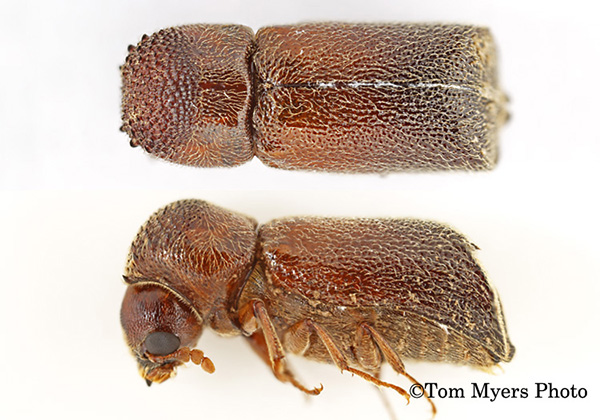
Fig. 3: Bostrichid powderpost beetles have a ‘hood like’ appearance up by the head.
Bostricid powderpost beetles are more serious pests of hardwood than softwood. There is little risk to softwood framing within homes. Similar to lyctids, bostrichids usually attack newly processed woods with high starch and moisture content. Tropical hardwoods (including bamboo) are especially vulnerable to attack, which often occurs prior to importation. Although bostrichids seldom re-infest wood after the first generation emerges, extensive damage can occur the first year due to a high initial population and rapid development.
Anobiid powderpost beetles are convex, reddish to dark brown beetles capable of attacking both hardwoods and softwoods. They are sometimes confused with drugstore and cigarette beetles that also occur in homes but infest stored foods. The emergence holes are 1/16-1/8 inch. Rubbed between the fingers, the powder sifting from the holes and accumulating in small piles may feel gritty (although for a few species attacking hardwoods this is not the case). Unlike the powderpost beetles discussed previously, anobiids can seriously damage beams, joists, and other structural components of buildings. Anobiids prefer to infest moist wood. A 13-30% moisture content is required for development of the larvae. Consequently, infestations are most severe in damp crawl spaces, basements, garages, and unheated outbuildings (Figure 4). Buildings with central heating and cooling seldom have sufficient dampness to support beetle development in living areas or attics.

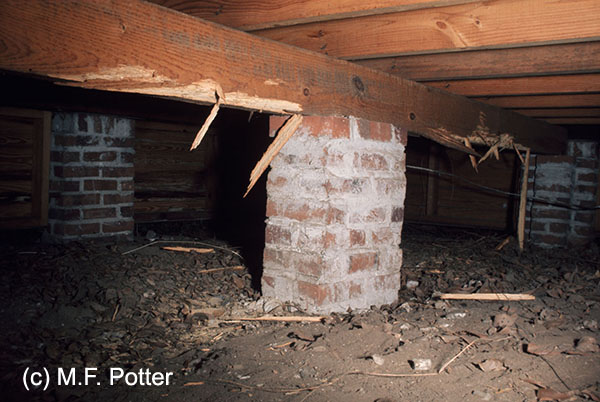
Fig. 4: Anobiid powderpost beetles infest damp areas such as crawl spaces.
Anobiid infestations occur throughout much of the country, but are more common in the southeastern and coastal states where humidity and temperature are high and crawl space construction is abundant. Unlike lyctids and bostrichids, anobiid powderpost beetles can digest the cellulose within wood, and are less dependent on starch and other nutrients that decline over time. This allows them to attack and infest wood regardless of age. In Europe, for example, some species of anobiids continue to infest wood in buildings that are centuries old. Larval development occurs slowly, exceeding 2-3 years if conditions are suboptimal. As a result, infestations are seldom obvious in buildings less than 10 years old. Although damage occurs slowly, the ability of emerging beetles to re-infest wood year after year can lead to serious problems requiring treatment and repair.
Emergence of adult anobiids generally occurs during the spring and summer months. In nature, they dwell in dead tree limbs or bark-free trunk scars. The adults are strong fliers and some are attracted to lights. Infestations within buildings may originate from infested lumber, firewood, or from beetles entering from outdoors.
Mistaken Identities
Many similar-looking beetles that are not powderpost beetles may occur within buildings. It is important to know the difference to avoid confusion and ensure that costly treatments and repairs are not made unnecessarily. Definitive diagnosis usually requires confirmation by an entomologist or knowledgeable pest management professional. As noted previously, powderpost beetles are sometimes confused with other small brown or black beetles infesting stored food items (flour, cereal, grains, seeds, nuts, spices, pet/bird food, etc.). Examples include flour beetles, drugstore and cigarette beetles, weevils, and merchant/sawtoothed grain beetles. These pests typically occur near stored food items in kitchens, pantries, etc.
Another pest group often mistaken for powderpost beetles scavenge on surface molds associated with damp conditions. One of the most common is the foreign grain beetle (Figure 5). These beetles are small (about 1/16-inch long), brownish, and abundant, with large numbers often observed throughout the building. The key characteristic to look for in identifying this beetle is the presence of a slight projection or knob on each front corner of the shield-like segment directly behind the head. A microscope or other means of magnification is necessary to see this characteristic. Foreign grain beetles are one of a group of beetles that feed on molds and fungi growing on poorly seasoned lumber or wet plaster and wallboard. They often are a problem in newly built homes. When new homes are constructed, microscopic surface molds form on damp wood and sheetrock, which in turn attracts the beetles. In older homes, foreign grain beetles may be associated with plumbing leaks, condensation problems, or poor ventilation. None of the beetles in this category damage wood; once the moisture condition is resolved, the surface molds disappear along with the beetles. (For more on this pest, see University of Kentucky Entomology Entfact-610).
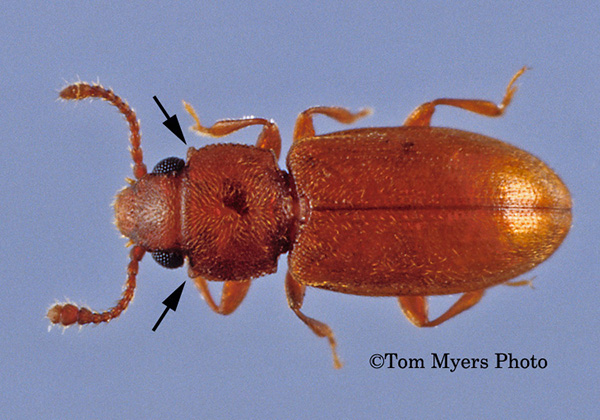
Fig. 5: Foreign grain beetles are often mistaken for powderpost beetles (note the two small ‘knobs’ just behind the head).
Is the Infestation Active?
Powderpost beetle infestations often die out of their own accord. Therefore, it is important to know whether the infestation is active or inactive before taking action. Active infestations usually have powder that is the color of freshly sawed wood sifting from the exit holes. Compared to old, abandoned holes, new holes will not have taken on the weathered appearance of the surrounding wood (Figure 6). If flooring, cabinetry, etc. were previously stained, new emergence holes will have no traces of stain inside the holes. If accumulations of powder appear yellowed, caked, or covered with dust or debris, the damage is probably old. Careful observation may be required to distinguish new powder from powder dislodged out of old larval galleries by vibrations.
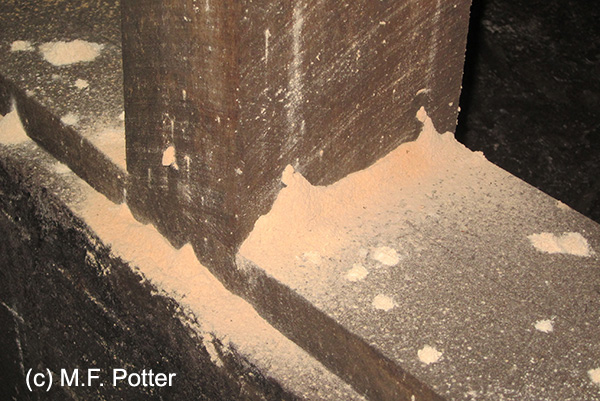
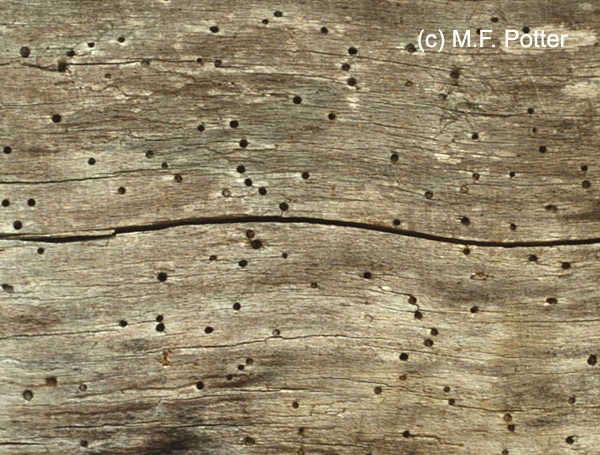
Fig. 6: Active versus inactive infestations. The former usually have fresh powder accompanying the emergence holes.
Another way to confirm that an infestation is active is to mark or seal any existing holes, sweep or vacuum up all powder, and recheck the wood for new holes and powder later on. Since most beetle emergence occurs in spring or summer, you may wish to wait until then to determine if new holes and fresh powder are present. This makes particular sense when attempting to determine whether an infestation is active during fall or winter.
Managing Infestations
Clients should know that there are a few different options for controlling powderpost beetles. Choosing the best approach depends on such factors as degree of damage, potential for re-infestation, and expense—both financial and emotional— that one is willing to bear. Powderpost beetles damage wood slowly. There is no need to act immediately for fear of risking the structural integrity of one’s home. A “wait and see” approach often makes the most sense, especially when there is uncertainty whether the infestation is active.
Prevention- Powderpost beetles, especially lyctids and bostrichids, typically enter buildings in lumber or manufactured articles, e.g. flooring, cabinetry, molding, paneling, furniture. Infestation occurs after wood is sawn into lumber and then sits in storage, or during transit and distribution. It is prudent for wood manufacturers to inspect incoming shipments for signs of beetles before they turn them into finished products. Wood that is suspect should not be used, especially if fresh emergence holes or powder is present. Many of the most serious infestations occur from using old lumber from a barn or woodpile to panel a room or build an addition.
Powderpost beetles lay their eggs only in bare, unfinished wood. Surfaces that are stained, varnished, painted or otherwise sealed are generally safe from future attack. Beetles emerging through such coatings were usually in the wood before the finish was applied. Although beetles emerging from finished wood can potentially re-infest by laying eggs in emergence holes, sealing the holes prevents this possibility.
Wood Replacement- Oftentimes, indications of beetle activity are limited to small sections of flooring or a few pieces of molding, trim, etc. The most efficient approach is often to remove and replace them, along with any boards or pieces directly adjacent as a precaution (Figure 7). This is especially true when the damage is due to lyctids or bostrichids. As noted, these powderpost beetles have a difficult time re-infesting wood after emerging indoors since, at that point, most surfaces are finished and starch and moisture is declining. When replacing sections of flooring, difficulties sometimes arise in matching the finish of the existing floor. If this is the case and the entire floor needs to be sanded and refinished, it is often prudent to wait at least six months in case more holes appear and additional boards need replacement.
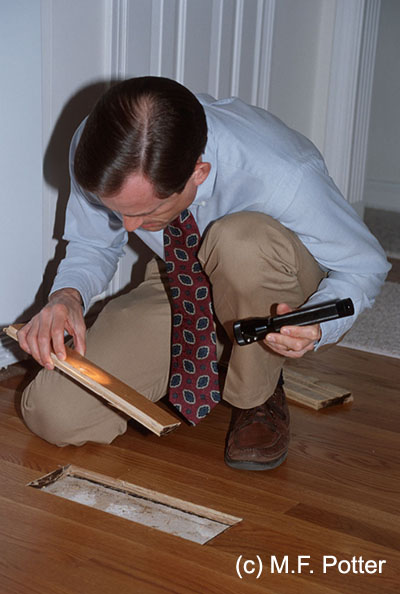
Fig. 7: Replacing small sections of damaged wood can be an effective means of control.
Lethal Temperatures- Before wood is used for construction or manufacturing, most of the water is removed by air-drying or kiln drying. Kiln-dried lumber is heated for a period of hours to a temperature of about 125-140°F. This is sufficient to kill all stages of powderpost beetles that might be in the wood prior to heating. However, even wood that is properly kiln dried may become infested during subsequent storage and transit. The longer wood sits in a vulnerable condition, the greater the chance beetles will find and lay eggs on the lumber.
The pest control industry also uses heat to treat dwellings and furnishings for bed bugs. While it would be difficult to kill wood-boring beetles in ‘built in’ components like floors and cabinets, de-infestation of furniture and similar objects may be possible within a heat chamber. Pest control firms use stationary and portable heat chambers of various sizes. Temperatures employed or for powderpost beetles would be similar to those used for bed bugs (120-135°F), although exposure times might need to be longer, e.g., up to 24 hours, depending on wood thickness. Powderpost beetles can also be killed by placing smaller items such as wood carvings and picture frames in a deep freeze (0°F) for 3-7 days, again depending on wood thickness. For more on this topic, see University of Kentucky Entomology Entfact-640, Thermal Deinfestation of Household Items.
Moisture Control- Anobiid powderpost beetles in particular have high moisture requirements for survival. Wood moisture below 14 percent during spring and summer are generally unsuitable for development. Therefore, it is advisable to install a moisture barrier in damp crawl spaces that are infested. Covering the soil with polyethylene sheeting reduces movement of moisture into the substructure and reduces the threat of the infestation spreading upward into buildings. Other ways to lower wood moisture content in crawl spaces is to improve drainage and increase air circulation by installing foundation vents. Moisture meters utilized by pest control firms are handy tools for measuring the moisture content of wood and predicting the potential for infestation (Figure 8).
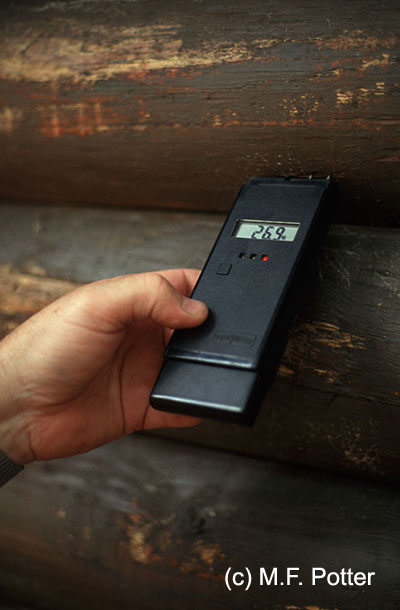
Fig. 8: Moisture meters are useful tools for predicting potential reinfestation.
Residual Insecticides- Various insecticides are used to treat beetle-infested wood. Insecticides known as borates are most widely used for this purpose. Borate sprays have the potential to penetrate and kill beetles within wood, as well as those entering or exiting the wood surface. Depth of penetration will depend on wood moisture content; the damper the wood, the deeper the borates will penetrate. Two different formulations are used, Bora-Care and Tim-bor. Both products are virtually nontoxic and odorless.
For borates to penetrate the wood surface must be unfinished; the spray will not penetrate paint, polyurethane, or other water repellent coatings. For this reason, the products have limited use for treating infestations within the living areas of homes. They are most often used for control and prevention of anobiid powderpost beetles infesting joists, beams, sills, studs, and other structural elements of buildings.
Borate sprays are sometimes used to treat beetle-infested hardwood floors, which first requires sanding to remove any finish. Besides being costly and disruptive, such treatments are seldom necessary since emerging lyctids and bostrichids are unlikely to re-infest. Additionally, in temperature-controlled buildings the moisture content of wood flooring tends to be around 10%. Borate penetration into wood this dry would be minimal and likely would have little effect on developing larvae.
Fumigation- Fumigation is an extreme and costly option for ridding a building of powderpost beetles. Homes undergoing fumigation are sealed with tarps and occupants must remain out for about three days. The concentration of gas is monitored and maintained at a specified level, and before being reoccupied, the building is ventilated.
Current fumigants containing sulfuryl fluoride are less effective against wood-boring beetles than those containing methyl bromide, which is no longer available. Consequently, de-infestation may not be successful. Structural fumigation may be warranted when infestations (typically of anobiids) have spread into walls, between floors, and other areas where access for surface treatment or wood removal is impractical. The best way to avoid such problems is early detection and one or more of the corrective actions mentioned earlier. Portable items such as furniture can be fumigated more effectively and at substantially lower cost than fumigating an entire building. Infested items are placed under tarps or in trailers or vaults to maintain gas concentration at the proper level. Some pest control companies offer this service to customers.
In Summary
Discovering powderpost beetles can be very concerning to homeowners. It is important to diagnose the problem correctly in order to avoid unnecessary effort and expense. Confirmation of the type of beetle, and whether the infestation is active are crucial first steps. Other considerations include location and extent of the infestation, and the type, age, moisture content, and condition/surface finish of the wood. Since powderpost beetles damage wood slowly, take time to consider the options available for remediation.
Revised: 6/18
CAUTION: Some pesticides mentioned in this publication may not be legal in your area of the country. If in doubt, please consult your local cooperative extension service or regulatory agency. Furthermore, ALWAYS READ AND FOLLOW LABEL DIRECTIONS FOR THE PRODUCT YOU ARE USING.
Images copyright University of Kentucky unless otherwise attributed.
